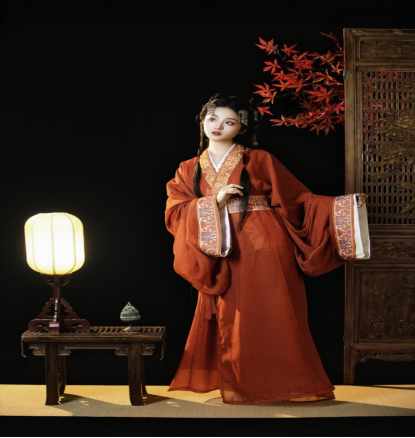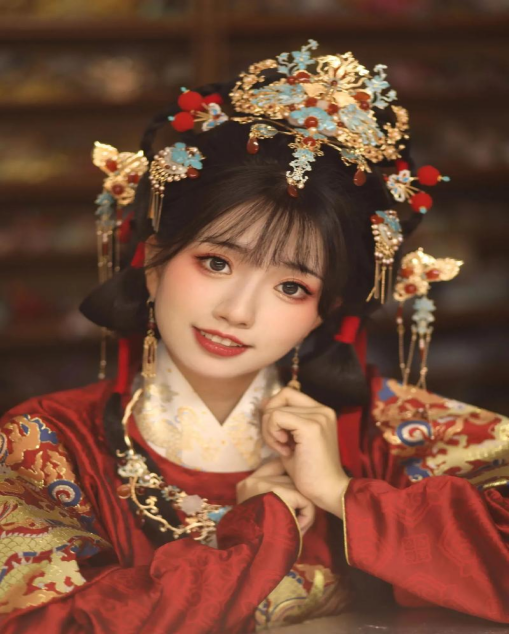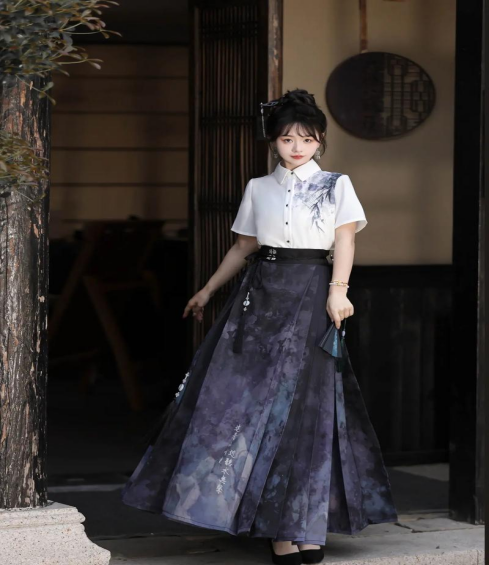The attitudes of Taiwanese people towards Hanfu
Taiwan is home to many ethnic minorities, the styles of their traditional clothing can be found in Hanfu. The development of Hanfu in Taiwan started relatively late, with Hanfu activities gradually gaining popularity about 20 years ago. At that time, many people believed that Hanfu was only for acting, it was hard to accept wearing it as everyday attire.
Nowadays, you can see people wearing Hanfu everywhere in Taipei’s bustling Ximending area, and the annual Taipei Hanfu Festival gathers thousands of Hanfu enthusiasts who perform programs and share their understanding of Hanfu culture. Today, Hanfu in Taiwan shows an increasingly vibrant development trend. From being initially unacceptable to becoming popular, the number of Hanfu enthusiasts continues to grow, and the community is becoming larger. What has sparked people’s love for Hanfu?


The reasons why Hanfu is popular in Taiwan
Hanfu Clothing is Beautiful
Hanfu comes in various forms such as robes, deep-cloaks, gowns, and tunic skirts, which align with the Eastern aesthetic. With harmonious color schemes and patterns that have evolved from being simple to diverse, including floral and bird motifs, as well as landscape designs, they fully showcase a refined and elegant artistic style.


Hanfu Accessories are Beautiful
Many people are drawn to Hanfu because of its beautiful accessories. Accessories play a crucial role in Hanfu and are indispensable parts of it. There are many types of Hanfu accessories, including palace ribbons, Yingluo, sachets, swords, forbidden steps, waist chains, pouches, as well as various headpieces, earrings, and bracelets, all of which are commonly seen in Hanfu shops in Taiwan.

How Does Hanfu Express Etiquette
Hanfu is not just a type of clothing; it is also an important part of Chinese culture. It is not only worn for daily outings but also serves as an important carrier of etiquette culture. For example, the left-shoulder design of Hanfu symbolizes respect and etiquette. Additionally, Hanfu, which signifies blessings and good fortune, is indispensable in important ceremonies such as weddings and coming-of-age ceremonies. People interested in traditional culture gradually start to learn related knowledge through Hanfu.

Which Dynasty’s Hanfu is Particularly Popular in Taiwan
In Taiwan, there are more people wearing Ming dynasty Hanfu on the streets. At the Hanfu markets in Taiwan, consumers particularly favor Ming dynasty Hanfu. The main reason is that Ming-style Hanfu features the designs of wide robes, large sleeves, a crossed collar and a rightward lapel, which can better showcase solemnity and grandeur. Besides, many young people ingeniously combine Ming-style Hanfu with modern clothing. For instance, the way of wearing modern T-shirts and shirts together with the horse-faced skirts of Ming-style Hanfu has become a fashion trend that young people pursue.

What are the characteristics of modern Hanfu in Taiwan?
While adhering to the basic forms of traditional Hanfu, modern Hanfu pays attention to details in production and incorporates local Taiwanese elements. A typical example is the use of local flowers, folk patterns, “twisted flowers” and “glass flower in pattern materials. By combining geographical environment, living and working conditions, short or knee-length Hanfu skirts have emerged, along with creations like shirts and dresses suitable for modern workplaces, which are favored by many young people.

Modern qipao in Taiwan retains its classic collar, buttons, and high slits while adding lace, beads, and embroidery decorations to the cuffs, hems, and skirts to better suit modern fashion trends.

Zhong shan suit
The traditional elements like standing collar, overlapping lapels, five buttons on the front jing, four pockets, and three buttons on the cuff kou can still be seen in modern Zhongshan suit. However, the color choices have become more varied, with more vibrant options available to meet different needs.
With the influence of elaborate costume designs in historical dramas, promotion through social media, and cultural exchanges across the strait, Hanfu has become known to more people and integrated into the daily lives of ordinary citizens, gradually becoming a new trend in Taiwan.







